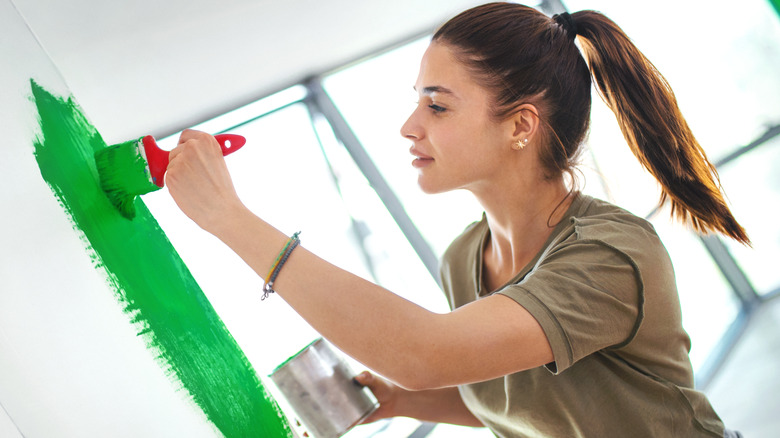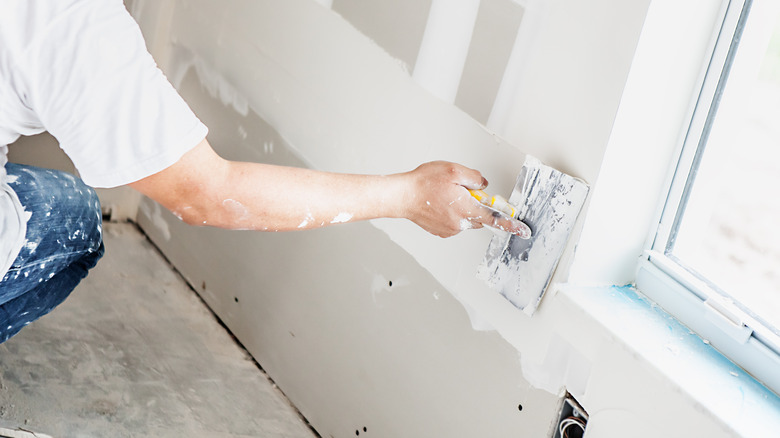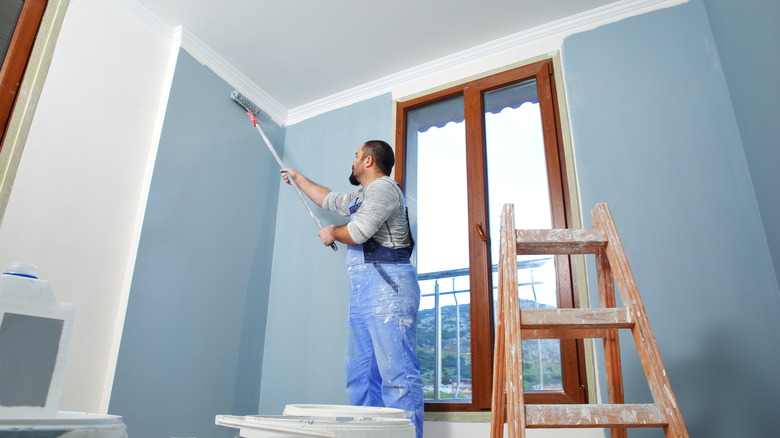Is It Necessary To Use Primer Before Painting Brand New Drywall?
When undergoing a new home renovation project, it's normal to want to cut a corner or two along the way in order to save time, money, and overall effort. However, this practice isn't recommended when it comes to interior painting, since skipping steps and using poor-quality materials can heavily impact the outcome of the job. This is especially true when considering the importance of primer, a typically white base coat that is applied and left to dry on a surface before applying your standard paint. Using a quality primer before painting new drywall is highly recommended, if not necessary, since paint can easily soak through drywall's extremely porous surface, calling for multiple applications and uneven coverage if primer isn't used.
From this perspective, forgoing primer actually defeats the point of trying to save money since you'll likely have to invest in additional cans of paint to make up for the layers absorbed into your drywall. In fact, the cost of extra paint may exceed the cost of the primer, causing you to lose money as opposed to saving or breaking even. Additionally, applying paint with a coat of primer underneath ensures the rich hues of your paint will come through nicely and helps prevent the paint job from fading and chipping over time. Here's more on the science behind porous drywall and how to paint new walls to achieve the best look that will last you until your next paint project.
New drywall absorbs paint easily
The main reason painters should always invest in a primer when painting a new wall lies in the drywall's porosity. Bare drywall is extremely absorbent due to it being primarily composed of gypsum and paper. If you choose to skip the primer and apply paint directly to the wall, the applied paint may soak into the wall at different rates, resulting in a splotchy and uneven appearance even after applying the last coat. You likely won't achieve the final look you want for your walls by avoiding a primer, even after several applications of paint.
There are some instances where primer isn't needed for a DIY paint job to look uniform and clean. For example, you may be able to skip priming your walls if they've already been painted before, have been checked and treated for imperfections like cracks and dents fairly recently, or if you're using a two-in-one paint and primer formula designed to eliminate the priming step for painters entirely. These self-priming paints aren't ideal for all paint projects, as homeowners may find they don't offer as even a coating as walls that have been fully primed beforehand. Professionals recommend using 2-in-1 paint only on already-painted drywall.
How to paint new drywall properly
When painting new drywall, it's important to use a high-quality primer and paint to accomplish the job. For paint, more expensive formulas are worth the higher price due to their increased thickness and higher-quality pigments. This saves homeowners time and effort by eliminating the need for paint thickening agents or extra cans of paint to complete the project. Manufacturers develop primers specifically for drywall, which tend to generate a stronger protective barrier when compared to other primers, effectively sealing the tiny holes left exposed along the surface of new drywall.
As for brushes, hand brushes with synthetic bristles are great for painting drywall, since they're stiff enough to hold shape, yet flexible enough to make proper strokes with minimal fallout. Using a paint roller with a short nap leaves a smooth finish on your new walls once the paint dries.
After checking the wall for imperfections and dust, apply the first coat of primer, allotting time for the product to dry before applying an additional coat or moving on to paint. The primer may require two or three coats, depending on the product's quality. After one to three hours, apply your first layer of paint. Wait for the first layer to completely dry before adding an optional second coat. Leave the walls untouched for up to four weeks following the final application to let the paint properly cure.


